Dragonflies, with their iridescent wings and remarkable aerial agility, are more than just beautiful insects darting across ponds and wetlands. These ancient predators serve as vital agents in the natural control of mosquito populations worldwide. While many people view dragonflies simply as elegant summer visitors, ecologists recognize them as voracious hunters that play a crucial role in maintaining ecosystem balance. Their appetite for mosquitoes—insects that not only cause irritating bites but also transmit dangerous diseases—makes dragonflies silent allies in our fight against these disease vectors. This natural form of pest control has gained increasing attention as communities seek sustainable alternatives to chemical insecticides in managing mosquito populations.
The Ancient Mosquito Hunters

Dragonflies have been hunting mosquitoes for over 300 million years, making them one of the oldest insect predators on Earth. These remarkable creatures existed during the time of dinosaurs, with fossil records showing ancient dragonflies with wingspans of up to two feet across. Throughout their evolutionary history, dragonflies have maintained their basic body structure and hunting techniques, evidence of their highly effective design as aerial predators. This long-standing predator-prey relationship between dragonflies and mosquitoes represents one of nature’s oldest biological control mechanisms, perfected over eons of evolutionary time.
Voracious Appetites: Dragonfly Feeding Habits
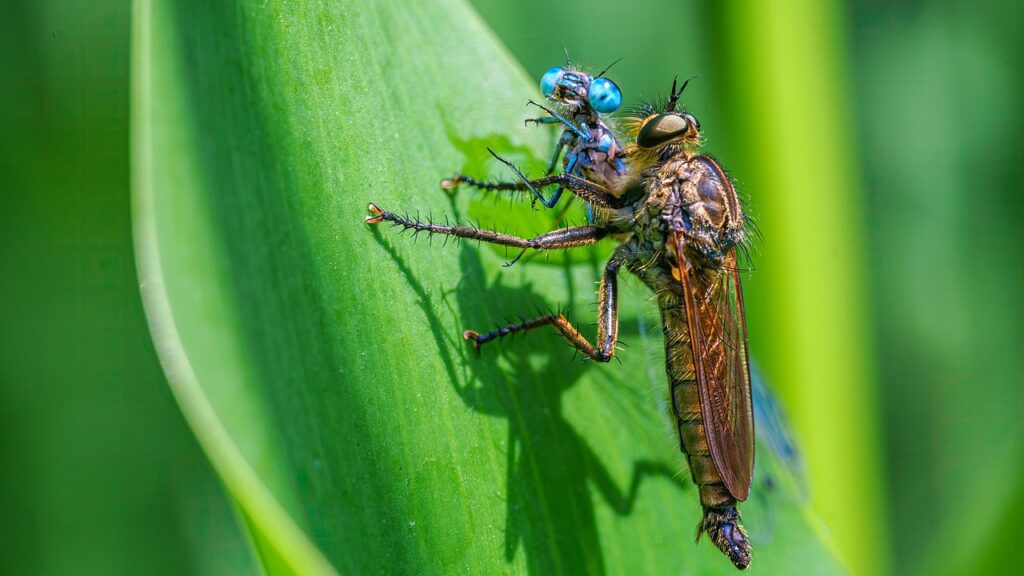
The hunting prowess of dragonflies is nothing short of impressive, with a single adult capable of consuming hundreds of mosquitoes daily. Studies have shown that dragonfly nymphs—the aquatic juvenile stage—are equally effective predators, feeding on mosquito larvae developing in the same water bodies. A dragonfly can devour roughly 30 to 100 mosquitoes per day, with some larger species potentially consuming even more when mosquitoes are abundant. This insatiable appetite makes dragonflies particularly valuable in areas with high mosquito populations, where their predatory impact can significantly reduce mosquito numbers. Their continuous hunting throughout both their aquatic nymph stage and aerial adult phase provides comprehensive mosquito control across multiple life stages of the pest.
Aerial Superiority: How Dragonflies Hunt
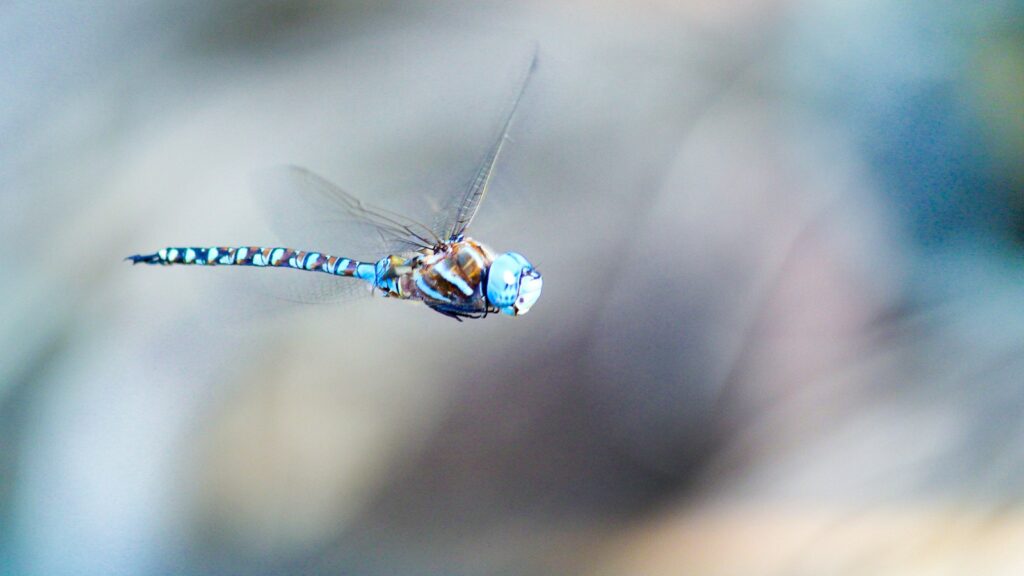
Dragonflies are considered nature’s perfect aerial predators, with hunting success rates estimated at over 95%—higher than almost any other predator. Their exceptional flying abilities include hovering, flying backward, changing direction instantly, and reaching speeds up to 35 miles per hour. These aerial acrobatics are powered by four independently-controlled wings that can beat at different rates and angles, giving dragonflies unmatched maneuverability when pursuing mosquitoes. Their enormous compound eyes contain up to 30,000 facets that provide nearly 360-degree vision, allowing them to track tiny prey while flying at high speed. This combination of speed, agility, and visual processing makes dragonflies extraordinarily effective mosquito hunters in mid-air.
The Double-Pronged Attack: Adults and Nymphs

Dragonflies provide a two-stage approach to mosquito control through their complete life cycle. While adult dragonflies hunt mosquitoes in flight, their aquatic nymphs target mosquito larvae developing in water. This dual approach creates a comprehensive control strategy that interrupts the mosquito life cycle at multiple points. Dragonfly nymphs can live in water for up to four years, providing long-term control of mosquito larvae in ponds, marshes, and other standing water habitats. The nymphs are equally voracious predators, using an extendable lower jaw called a labium to snatch mosquito larvae with lightning speed. This synchronized attack from both adults in the air and nymphs in the water creates an especially effective natural mosquito management system.
Disease Vector Control: Public Health Benefits
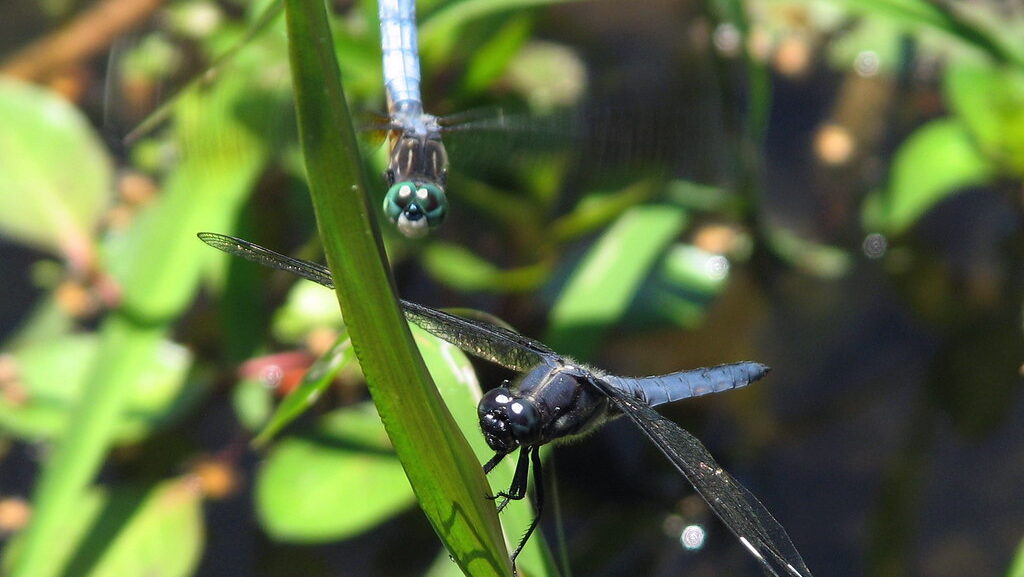
The mosquito-hunting behavior of dragonflies contributes significantly to public health by reducing populations of disease-transmitting mosquitoes. Mosquitoes are vectors for numerous serious illnesses including malaria, dengue fever, Zika virus, West Nile virus, and various forms of encephalitis that collectively affect millions of people annually. By consuming large quantities of these disease vectors, dragonflies indirectly help prevent the spread of these illnesses in both tropical and temperate regions. Public health officials increasingly recognize the value of dragonfly conservation as part of integrated pest management strategies in regions where mosquito-borne diseases are endemic. Their natural predation complements other control methods, particularly in areas where chemical interventions face limitations due to resistance or environmental concerns.
Compared to Other Control Methods

Unlike chemical insecticides, dragonflies provide mosquito control without harmful environmental side effects or the risk of developing resistance. Traditional chemical controls often kill beneficial insects along with mosquitoes and can contaminate water supplies if improperly used. Dragonflies offer a selective approach, primarily targeting insects of appropriate size including mosquitoes, while largely ignoring beneficial pollinators like bees. Their continuous presence provides ongoing control without the need for repeated applications as required with chemical treatments. Additionally, dragonflies integrate seamlessly with other biological control strategies such as introducing mosquito-eating fish or encouraging bat populations, creating comprehensive integrated pest management systems with minimal environmental impact.
Creating Dragonfly-Friendly Environments

Homeowners and communities can actively support dragonfly populations by creating suitable habitats that encourage these beneficial predators. Installing small ponds with varied depths, aquatic vegetation, and flat rocks provides ideal breeding grounds and perching sites for numerous dragonfly species. Native aquatic plants should be incorporated as they provide essential structure for dragonfly eggs and protective cover for developing nymphs. Avoiding broad-spectrum pesticides is crucial as these chemicals can eliminate the insects dragonflies feed on or directly harm the dragonflies themselves. Maintaining diverse landscaping with open areas for hunting and tall perching plants like reeds and rushes creates an inviting environment for these mosquito-controlling allies. Even small water features can attract dragonflies, though larger or interconnected water systems support more robust and diverse dragonfly populations.
Conservation Challenges for Dragonflies
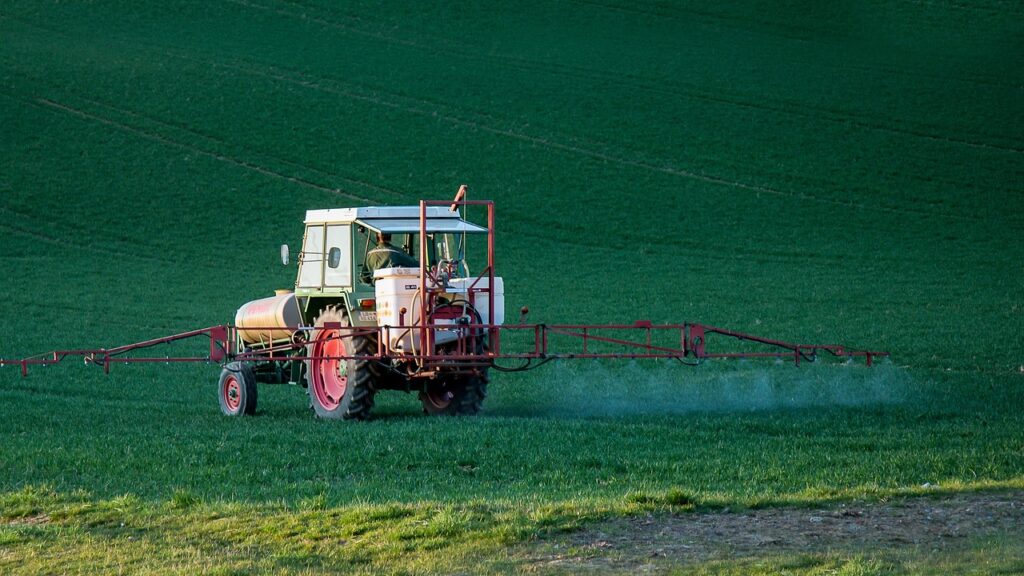
Despite their ecological importance, dragonfly populations face numerous threats that impact their effectiveness as natural mosquito controllers. Habitat loss from wetland drainage, water pollution from agricultural runoff, and climate change are among the primary challenges affecting dragonfly populations globally. Pesticide use presents a particular threat, as both dragonflies and their prey can accumulate these chemicals, disrupting food webs and reproductive success. According to the International Union for Conservation of Nature, approximately 10% of dragonfly species worldwide face extinction risk due to these combined pressures. Conservation efforts focusing on preserving wetland habitats and reducing chemical pollution in aquatic systems are essential for maintaining healthy dragonfly populations and their natural mosquito control services.
Dragonflies in Biological Control Programs
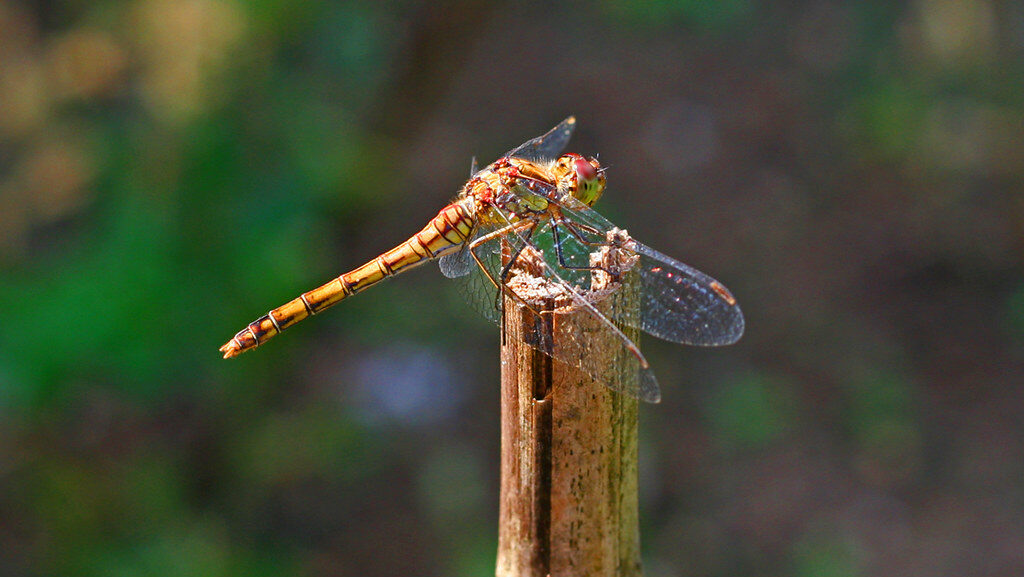
Some regions have experimented with intentionally introducing or augmenting dragonfly populations as part of formal biological control programs targeting mosquitoes. In parts of Asia, particularly in rice-growing regions where standing water creates ideal mosquito breeding conditions, farmers have incorporated dragonfly-friendly practices to boost natural predator populations. These programs typically focus on habitat enhancement rather than direct introduction, as raising dragonflies in captivity at scale presents significant challenges. Successful initiatives have included creating designated dragonfly ponds near agricultural areas and modifying irrigation practices to support natural dragonfly reproduction. Community education about the benefits of dragonflies has proven essential to these programs’ success, helping shift public perception from viewing these insects as merely decorative to recognizing their practical value in pest management.
Fascinating Adaptations for Mosquito Hunting

Dragonflies possess specialized adaptations that make them particularly effective mosquito predators beyond their obvious speed and agility. Their legs form a specialized “basket” arrangement that allows them to scoop smaller insects from the air while in flight, essentially functioning as an aerial net. This adaptation enables them to capture multiple mosquitoes in quick succession without needing to land. Dragonflies can process visual information at remarkable speeds, perceiving the world essentially in slow motion compared to humans, which allows them to track fast-moving prey with precision. Some species have evolved preferred hunting times that coincide with peak mosquito activity, particularly at dawn and dusk when many mosquito species are most active. These specialized hunting adaptations have been refined over millions of years of evolution, making dragonflies particularly well-suited for mosquito predation.
Research and Monitoring Efforts

Scientists are increasingly studying the relationship between dragonfly and mosquito populations to better understand this natural control mechanism. Field studies using modern tracking techniques, including micro-transmitters attached to larger dragonfly species, have revealed sophisticated hunting patterns and territory use. Citizen science projects engage the public in monitoring dragonfly populations, with volunteers contributing valuable data on species distribution, abundance, and behavior across different habitats. Researchers are also investigating how climate change might affect the synchronization between dragonfly and mosquito life cycles, as warming temperatures could potentially disrupt the timing that currently makes dragonflies effective predators. These research efforts provide critical information for conservation strategies and potential applications in mosquito management programs worldwide.
Cultural and Historical Perspectives
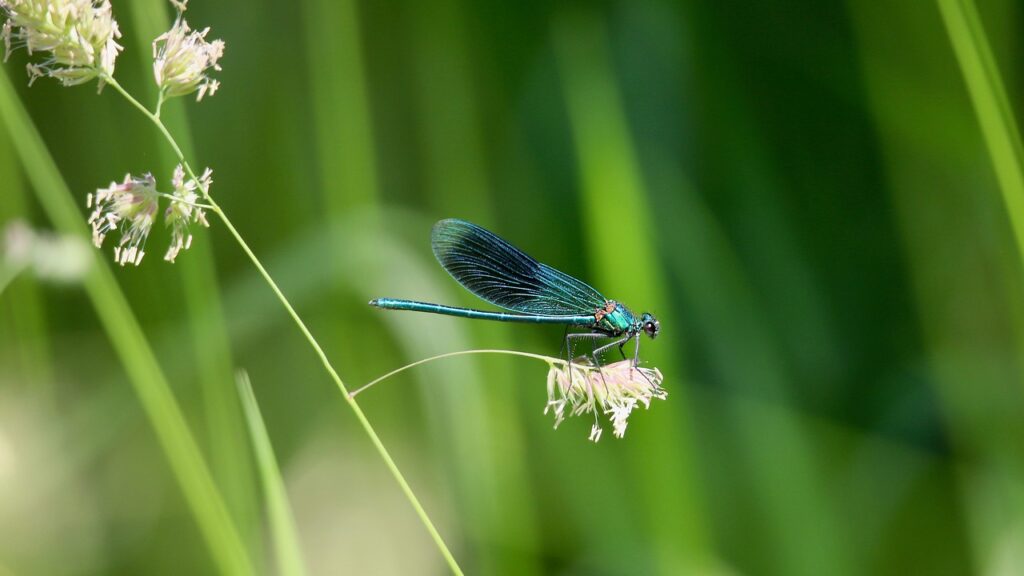
Throughout human history, many cultures have recognized the beneficial relationship between dragonflies and mosquito control, even before scientific understanding of this interaction. In Japan, dragonflies have been revered for centuries as “mosquito hawks,” with some traditional agricultural communities deliberately creating habitats to attract these beneficial predators. Native American traditions often feature dragonflies as symbols of swiftness and activity, with some tribes connecting them to successful hunting—possibly reflecting observations of their predatory efficiency. In traditional medicine systems across Asia, dragonflies were sometimes associated with health and protection from illness, perhaps an intuitive recognition of their role in reducing disease-carrying mosquitoes. These cultural appreciations demonstrate how human societies have long observed and valued the ecological services provided by dragonflies, even without formal scientific knowledge of their predator-prey relationships.
Future Directions in Dragonfly-Based Control

As concerns about chemical insecticide resistance and environmental impacts grow, interest in harnessing dragonflies for mosquito management continues to expand. Innovative approaches include designing urban water features specifically to support dragonfly populations while minimizing mosquito breeding, essentially creating “living insectaries” in public spaces. Some researchers are exploring how artificial intelligence and computer modeling can predict optimal conditions for maximizing dragonfly predation efficiency in different environments. Conservation biologists are working to identify critical dragonfly “hotspots” that warrant special protection for their role in regional mosquito control, particularly near human settlements. As climate change alters mosquito ranges and potentially brings new disease vectors to previously unaffected regions, the natural control services provided by dragonflies may become increasingly valuable in comprehensive public health strategies worldwide.
